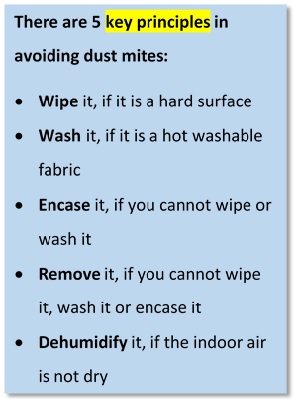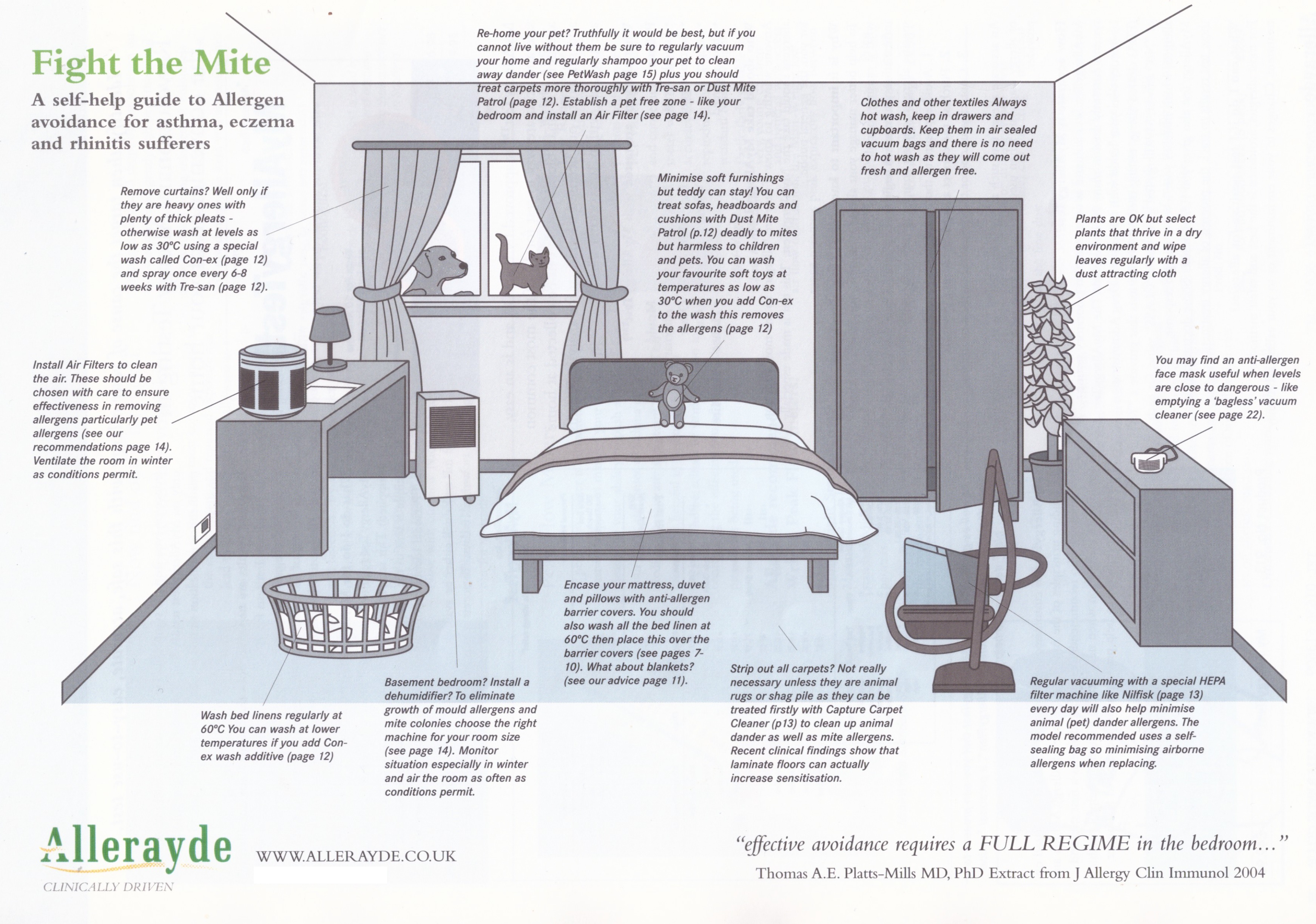WHAT IS DUST ALLERGY?
Although there are many components in house dust to which people may be allergic, the most important is the house dust mite. Waste product particles produced by the mite and fragments of dead mites are the main substances in house dust to which allergic people.
WHAT ARE HOUSE DUST MITES?
The house dust mite is a microscopic creature, related to spiders and ticks that live primarily in mattresses, pillows, duvets, carpets and soft furnishings. Mites do not live on people, but they live near them, feeding off shed skin scales.
As well as needing our skin to survive, mites also require humidity of at least 50%, warmth and darkness as they are sensitive to UV light.
The greatest source of mites in the house is the bedroom, particularly the mattress, which provides the best conditions of warmth, humidity, darkness and food for their growth. A mattress can contain over a million dust mites. Each female lays, up to 60 eggs in her lifetime, with a new generation produced every three weeks. During the lifetime of a mite, about 80 days, it produces one thousand allergy causing waste particles. It is easy to see why mattresses contain large numbers of living and dead mites.
Live mites are too large to be inhaled, rather it is the smaller waste particles and fragments of dead mites. These smaller particles are easily disturbed and readily become airborne and are inhaled, causing allergy symptoms. So walking on a carpet, making a bed or disturbing other soft materials where mites live can lead to allergy symptoms, such as shortness of breath, runny nose, sore watery eyes, sneezing, sore itchy skin.
HOUSE DUST MITE AVOIDANCE
As the concentration of dust mites is highest in the bedroom, this is where most emphasis on avoidance should be.

START WITH THE BEDROOM
Studies have shown that the most important rooms to deal with are bedrooms, where most time is spent and where dust levels are highest.
- encase mattresses, duvets and pillows in allergen proof covers to prevent house dust mite allergens escaping. Or replace duvets and pillows with ones already having an allergen proof outer fabric.
- for bunk beds encase both mattresses
- avoid using feather pillows and duvets as they difficult to wash. Man made fibre pillows can be washed at 60°C.
- only use washable blankest and wash all bedding in hot water at least every two weeks. This kills any mites and washes out all mite allergens. Alternatively obtain duvets and pillows that come with a dust proof barrier already incorporated, which can never be colonised by mites, reducing the need for washing frequency.
- remove floor is carpets where possible and use a vacuum cleaner with a HEPA filter. A wipeable floor is best with washable rugs when required as long as they are washed every two weeks.
- remove soft toys, cushions and soft furnishings. Washable toys may be kept in small numbers as long as they are regularly washed. All clothes should be kept in cupboards, drawers or sealed bags.
- do not use heavy curtains or Venetian blinds unless they are regularly washed or wiped. Washable blinds are best.
- do not shampoo carpets as residual moisture will increase mite growth, use a dry cleaning product to remove dust mite allergens.
- keep animals out of the bedroom.

OTHER ROOMS
- use an efficient, powerful HEPA vacuum cleaner regularly.
- keep carpets, soft furnishings and soft toys to a minimum.
- avoid heavy curtains and Venetian blinds. Wipeable blinds are better.
- keep clothes and other fabrics in cupboards, drawers or sealed bags.
- use a damp or dust attracting cloth when cleaning.
- use wooden or plastic furniture wherever possible.
- wear a dust mask when making the bed, cleaning or dusting or emptying a bagless cleaner.
- keep humidity below 50% to prevent dust mite growth completely. Any decrease in humidity will supress dust mite activity and allergen production.
“The spores released by moulds and the faecal pellets of house dust mites are the most common domestic allergens. Although the symptoms of exposure to house dust mites are poorly defined, reductions in levels of hose dust mites are recommended”.
World Health Organisation 2005
Further details can be seen here:
https://en.wikipedia.org/wiki/House_dust_mite
More information on choosing allergen barrier covers can be found here: